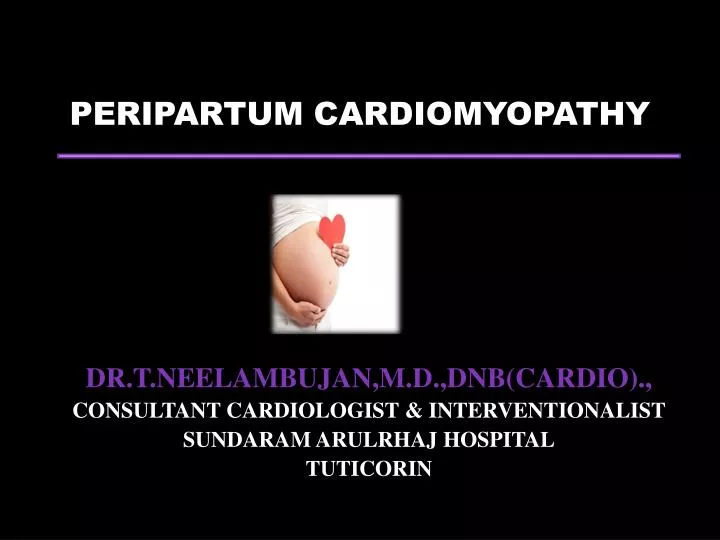Peripartum cardiomyopathy (PPCM) is a rare but potentially life-threatening condition that affects women during pregnancy or shortly after giving birth. It is characterized by the weakening of the heart muscle, leading to symptoms such as shortness of breath, fatigue, swelling of the legs, and difficulty in performing everyday activities. Despite its rarity, PPCM has garnered significant attention from medical professionals and researchers due to its serious implications for maternal health. In this article, we delve into the prevalence of peripartum cardiomyopathy, its risk factors, diagnosis, treatment options, and ongoing research efforts to better understand and manage this condition.
Understanding Peripartum Cardiomyopathy
Peripartum cardiomyopathy is a type of heart disease that specifically occurs during pregnancy or within the first few months after delivery. While the exact cause of PPCM is not fully understood, several factors have been identified as potential contributors to its development. These include hormonal changes, inflammation, genetic predisposition, and nutritional deficiencies. The condition is diagnosed based on clinical symptoms, echocardiography, and other cardiac imaging tests that assess the heart’s structure and function.
Prevalence and Incidence
PPCM is considered a rare condition, with estimates of its prevalence varying across different populations. According to the American Heart Association, peripartum cardiomyopathy affects approximately 1 in every 3,000 to 4,000 live births in the United States. However, these numbers may vary in other regions and ethnic groups. Studies have suggested that women of African descent may have a higher risk of developing PPCM compared to women of other ethnicities.
Risk Factors for Peripartum Cardiomyopathy
Several factors may increase the risk of developing peripartum cardiomyopathy. These include:
1. Advanced Maternal Age: Women who are older at the time of pregnancy, particularly those over the age of 30, may have a higher risk of PPCM.
2. Multiple Pregnancies: Women who have had multiple pregnancies or multiple gestations (e.g., twins or triplets) in a short period may be at increased risk.
3. High Blood Pressure: Pre-existing hypertension or gestational hypertension during pregnancy can contribute to the development of PPCM.
4. History of Heart Disease: Women with a history of heart disease, including myocarditis or previous episodes of PPCM, are at higher risk.
5. Ethnicity: As mentioned earlier, women of African descent may have a higher prevalence of PPCM compared to other ethnic groups.
Diagnosis and Clinical Presentation
The diagnosis of peripartum cardiomyopathy is based on a combination of clinical evaluation, echocardiography, and other imaging tests. Common symptoms that may indicate PPCM include:
- Shortness of breath, especially with exertion or lying flat
- Fatigue or weakness
- Swelling of the legs, ankles, or feet (edema)
- Rapid or irregular heartbeat (palpitations)
- Difficulty performing everyday activities
It is essential for healthcare providers to consider PPCM in pregnant or postpartum women presenting with these symptoms, as prompt diagnosis and treatment are crucial for improving outcomes.
Treatment Options and Management
The management of peripartum cardiomyopathy typically involves a multidisciplinary approach that includes cardiologists, obstetricians, and other healthcare professionals. Treatment options may include:
1. Medications: Heart failure medications such as beta-blockers, ACE inhibitors, and diuretics may be prescribed to manage symptoms and improve heart function.
2. Lifestyle Modifications: Patients are often advised to make lifestyle changes such as reducing salt intake, maintaining a healthy weight, and avoiding alcohol and tobacco.
3. Monitoring: Regular follow-up visits with healthcare providers are essential to monitor heart function, adjust medications as needed, and address any new symptoms or concerns.
4. Supportive Care: In severe cases, advanced therapies such as mechanical circulatory support or heart transplantation may be considered.
Ongoing Research and Future Directions
Despite advances in the understanding and management of peripartum cardiomyopathy, many questions remain unanswered. Ongoing research efforts are focused on:
- Identifying genetic factors that may predispose women to PPCM
- Exploring novel biomarkers for early detection and risk stratification
- Evaluating the role of hormonal therapies and immune-modulating agents in PPCM management
- Improving access to specialized care and support for women affected by PPCM
- Collaborative initiatives between healthcare institutions, research organizations, and patient advocacy groups are essential for advancing knowledge about PPCM and improving outcomes for affected individuals and their families.
Conclusion
Peripartum cardiomyopathy is a rare but serious condition that requires prompt recognition, diagnosis, and management to optimize outcomes for both mothers and infants. While its exact prevalence may vary, PPCM remains a significant concern in maternal health, highlighting the need for ongoing research, education, and multidisciplinary care approaches. By raising awareness, promoting early detection, and implementing evidence-based interventions, healthcare providers can make a meaningful difference in the lives of women affected by peripartum cardiomyopathy.


